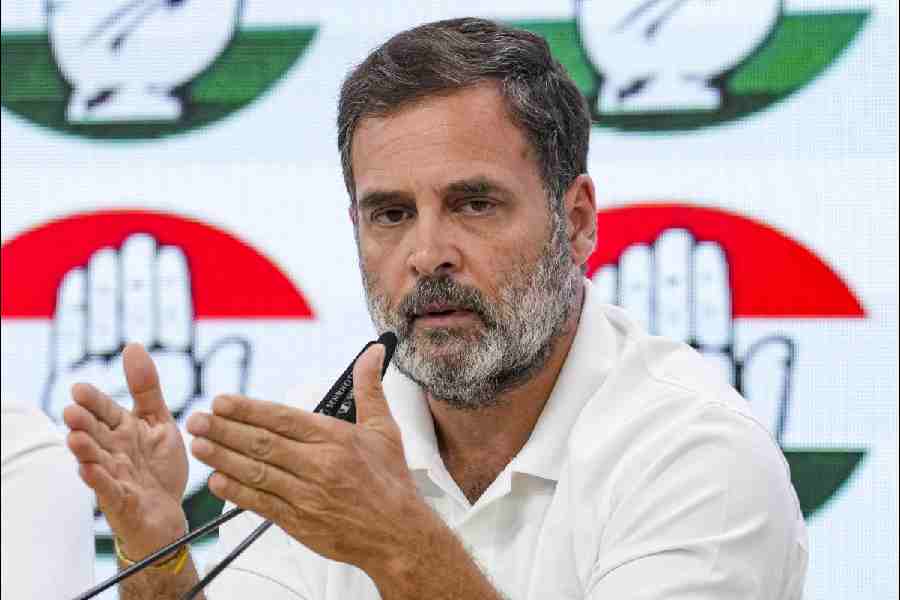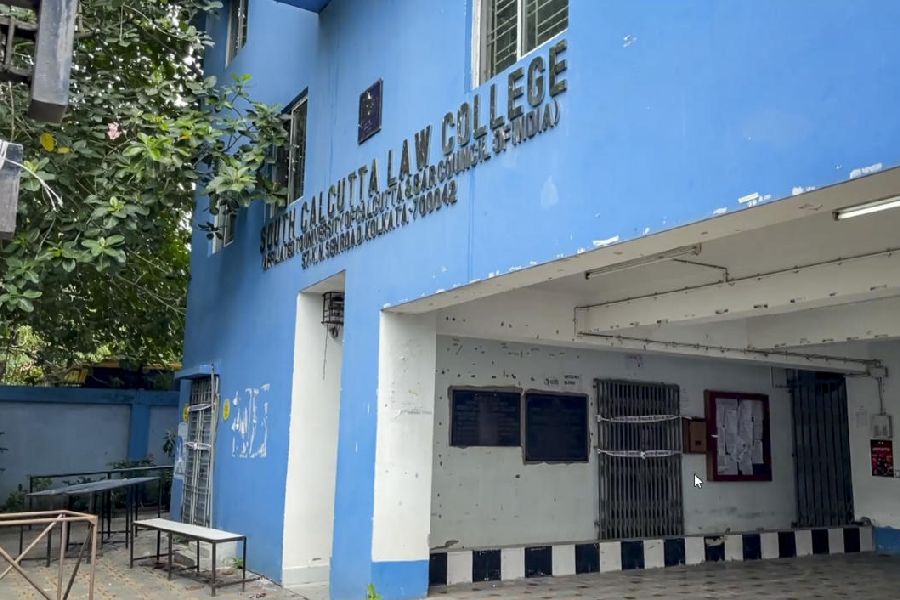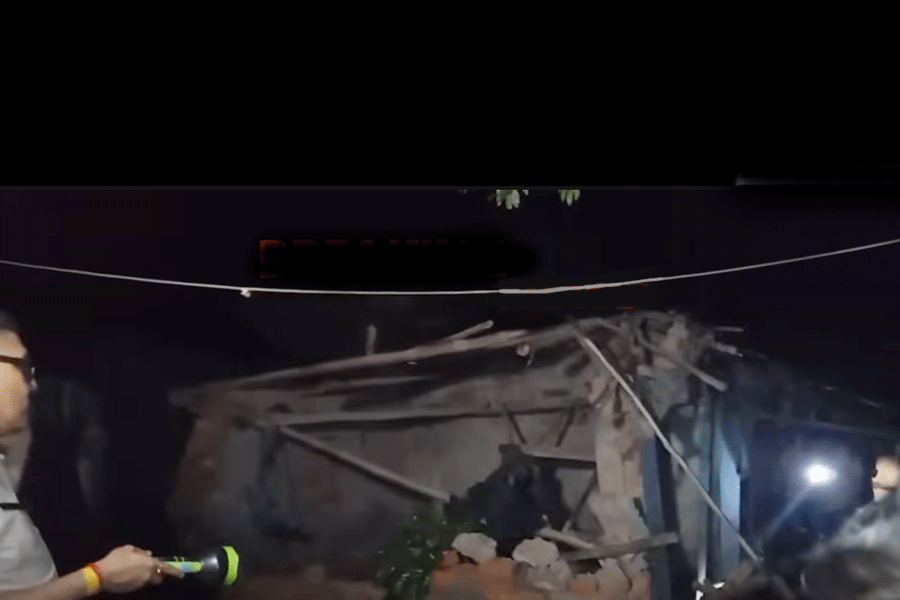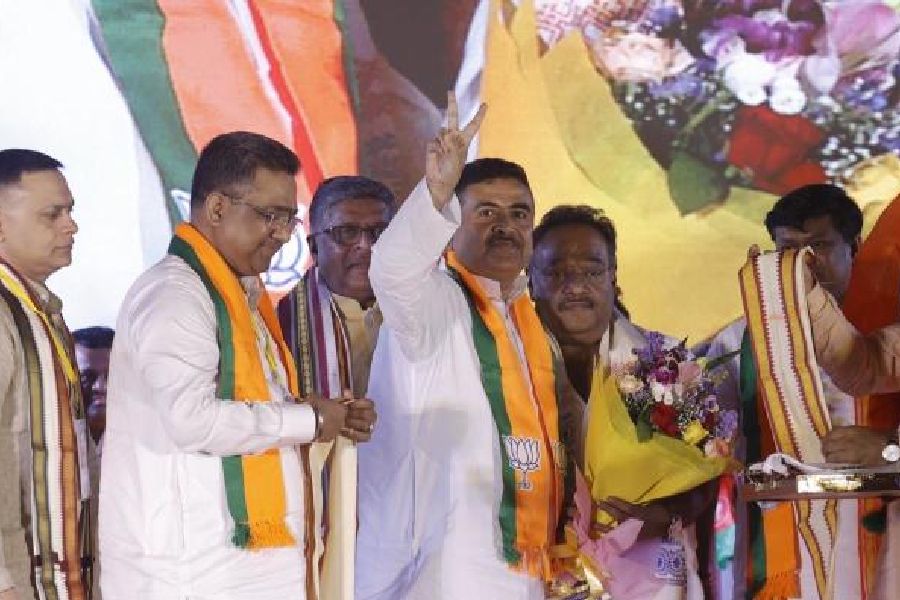 |
| A congested Beur More on the New Bypass on Thursday. Picture by Ranjeet Kumar Dey |
Patna, Feb. 24: Development comes with its own share of pros and cons. The 5-km stretch between Aneesabad and Pahadi, commonly referred to as New Bypass, seems to be a perfect example.
Over the past 15 years or so, the stretch on National Highway-30 to the south of Patna has transformed into one of the busiest stretches in the Patna Municipal Corporation (PMC) limits with thousands of passengers and goods vehicles zooming in and out of the city.
The speed corridor, which the road construction department identifies as a “gap” in the Mohania- Bakhtiarpur stretch, later connects to the Golden Quadrilateral.
Keeping pace with development, densely populated residential neighbourhoods such as Soranpur, Bigrahpur, Hanuman Nagar, People Co-operative Society and many more have mushroomed on both flanks of the road, making the stretch congested beyond imagination. The presence of Patna Central School and the Hindustan Petroleum site have added to the traffic nightmare.
With pedestrians jostling for space on the carriageway along with the heavy traffic, this road has become extremely prone to accidents, mostly involving pedestrians. Hardly three to four traffic police personnel manning the entire stretch at any given point of time find it difficult to manage the unruly traffic.
Matters have come to such a head that pedestrians have now started raising a pitch for subways on the risky stretch to avert the almost daily accidents.
A whopping number of 99 cases of road traffic accidents registered at the Gardanibagh, Beur, Kankerbagh, Ramkrishnanagar, Patrakarnagar, Bypass, Agamkuan and Jakkanpur police stations on this stretch in 2010 alone gives support to the residents’ demand.
Septuagenarian Jwala Prasad, a retired assistant public works department engineer, considers crossing the road in front of his house at Dhelwan on the stretch a Herculean task. “Residents have to wait very long to get a clear road to cross over, while sometimes traffic accidents cause snaking traffic snarls, leading to loss of precious time and unnecessary harassment,” said Jwala.
A senior official of the national highway wing of the road construction department said: “While the possibility of pedestrian subways cannot be totally ruled out, this particular stretch is no exception as compared to many other roads passing through other thickly populated areas of the city with heavy traffic.”
Around six months ago, the National Highways Authority of India (NHAI) began work on the four-laning of this stretch, compounding the existing problems. While the four-laning project of the entire Mohania-Bakhtiyarpur corridor falls under the purview of NHAI, this gap, which does not have a provision of service lanes, now lies idle in the hands of the road construction department. To make matters worse, work on the road-widening project has been suspended. “We are waiting for the clearance of funds and shifting of civic utilities, which have led to the suspension of four-laning work for the past two months,” the officer said.
The officer, eventually, said: “The provision for a pedestrian underpass is approved only when there is an embankment of 3-5m at the intersection of two adjoining roads, which is not present anywhere on this particular stretch according to my knowledge.”
Supporting the need for subways on this stretch, a senior official of Zone III of Patna traffic police said: “This stretch is surrounded by thickly populated neighbourhoods and being a part of a national highway, it has to endure heavy vehicular and population pressure. Frequent accidents involving pedestrians lead to road rage and protests, which can definitely be curtailed by constructing properly planned subways.”










